

The Power of the Honeybee
A colony of honeybees works just as hard as Washington farmers
Pollination is required for nearly all of the world’s seed plants. This is true for Washington’s beloved helmocks, rhododendrons, apples, potatoes, spinach and every other crop you see. Pollen, which often looks like yellow dust, is the plant’s male sex cells and is a vital part of pollination, or the reproduction cycle. Pollen creates more than just an allergic reaction. Pollen from a flower’s anthers (the male part of the plant) rubs or drops onto a pollinator like a honeybee or a butterfly. The pollinator then takes this pollen to another flower where the pollen sticks to the stigma (the female part). The fertilized flower later yields fruit and seeds.
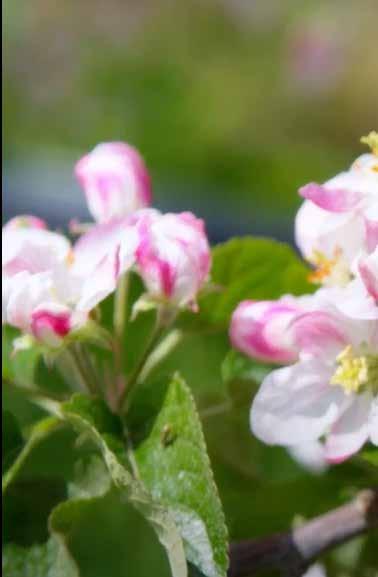
This is how plants survive and multiply naturally. More than 150 food crops in the U.S. depend on pollinators, including almost all fruit and grain crops.
Some plants don’t need a physical pollinator to move pollen around. Wind also works on some crops, like wheat, rice, corn, rye, barley and oats. Nut-producing trees, such as walnuts, pecans and pistachios, are usually wind-pollinated as well as pines, spruces, firs and many hardwood trees. Spinach is also a wind-pollinated crop, which means spinach seed farmers require large isolation distances between fields so they don’t cross-pollinate with the wrong varieties.
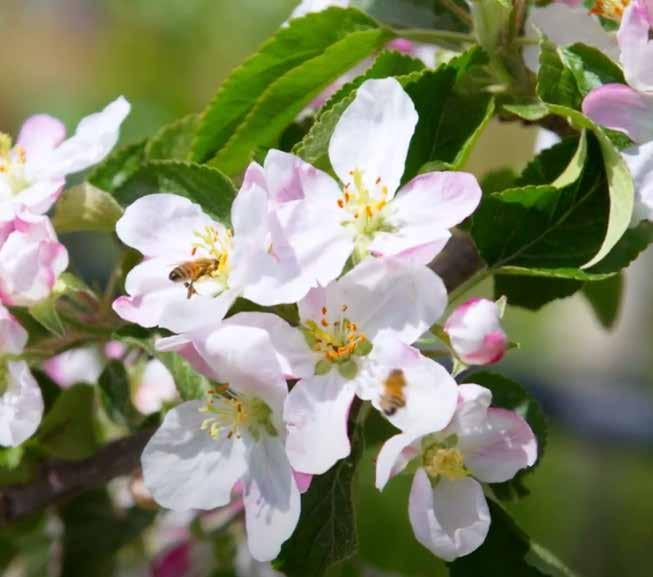
Other crops rely on insects to pollinate between plants. Insect-pollinated vegetables include asparagus, broccoli, Brussels sprouts, cabbage, carrot, cauliflower, celeriac, celery, collard, cucumber, eggplant, gourd, kale, kohlrabi, muskmelon, okra, onion, parsley, parsnip, hot pepper, pumpkin, radish, rutabaga, spinach, squash, turnip and watermelon. Since insects can travel for miles, seed farmers growing these crops must keep their fields at least one to three miles away from other varieties so they can keep their seed pure.
Bees are vital workers for Washington’s farms and food lovers. Whether it’s the standard honeybee that spreads pollen over thousands of apple trees in our state, or the unique alkali bee that nests in the ground and pollinates our alfalfa fields, bees are critical to agriculture in our state. Scientists around the world are studying the health of bees, and Washington State University (WSU) is a leader in this research. Dr. Steve Sheppard is an entomologist from WSU and works on honeybee breeding and genetics, as well as colony health research. Over the last decade, beekeepers have seen a disastrous decline in the health of honeybee colonies, often averaging over 30 percent loss annually. Varroa mites, and the viruses they proliferate, play a major role in those losses. There are more than 60 factors that play a role in the recent colony collapse disorder. According to Sheppard, it appears to be several stresses that happen together to cause the problem. To provide solutions, researchers in Washington are working on multiple fronts. One potential solution involves fungi. According to a

recent paper from WSU scientists, the U.S. Department of Agriculture and Fungi Perfecti, a business based in Olympia, a mushroom extract fed to honeybees greatly reduces virus levels. The study suggests that bees with Lake Sinai virus and deformed wing virus could benefit from extracts of polypore mushroom mycelium, which were shown to reduce viral counts within the bees.
To learn more about the role bees play in Washington’s food system, visit wagrown.com.


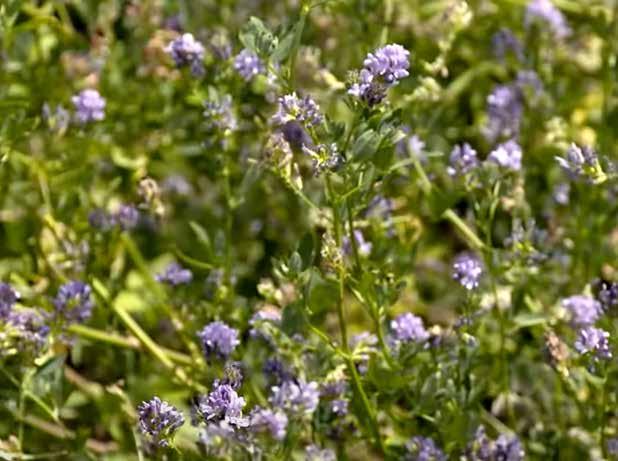

Inside the Hive

Happy honeybees in Washington
It’s not easy to find anything that works as hard as a farmer, but honeybees manage to do it! Recently, we traveled north of Reardan to a canola field to meet Bud Wilhelm, a beekeeper who travels with his team and his bees to different fields to pollinate crops for farmers. B’s Apiary and their sister business, Three Sisters Honey Company, have been tending bees for more than 12 years. They manage more than 5,300 pollination honeybee colonies and 2,000 replacement colonies. Each colony contains 50,000-60,000 honeybees. On a recent visit, the Washington Grown TV team got up close and personal with Wilhelm’s team of bees.
“Can they smell fear?” joked host Kristi Gorenson as Wilhelm opened up a box of bees.
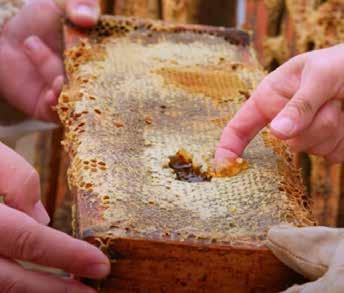
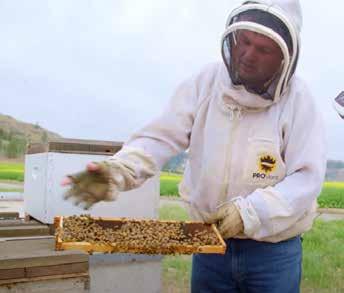
“You know, they communicate by smell,” said Wilhelm with a smile. “So, does fear smell?”
“I don’t know,” laughed Gorenson.

“Bees get two products from a flower. They get pollen, which is their protein source, and they’ll get nectar, which is their carbohydrate source,” explained Wilhelm. “And when that nectar comes in, it has a really high moisture content. And they need to spread that out, and fan it and dehydrate it down to make the honey.”
As with many beekeepers, Wilhelm’s bees move with the flowers on the West Coast to keep the colonies well fed and healthy. He ships his bees to California in January for almond pollination, then they come back to Washington in March to pollinate apples and cherries. From there, they go to the Davenport area to service the canola crop. After that cycle, half of the colonies go to northeast Washington and Idaho to produce honey. The other half stays in the Columbia Basin to pollinate canola, squash and carrot seed. Finally, when the seasons are done, the bees are taken to nearby forested land to rest and get a different diet.
“We have found that it’s very good for the bees,” explained Wilhelm. “As we pull them out of that agricultural setting and we get them in a more diverse habitat, their diet drastically
changes. They’re pulling pollen from a variety of sources.”

“It’s their vacation,” joked Gorenson.



“This is their Hawaii,” laughed Wilhelm. Like wine, honey flavor can change depending on the land the bees are in. The nectar from the different flowers can drastically change the flavor profile and color of the honey.
“As you can see, these bees are really happy,” said Wilhelm. And happy bees make a lot of honey. “There will be roughly two gallons of honey in this single box. We try to make a honey crop that is as pure and as clean as we can possibly make it.”
Wilhelm and his team harvest the honey and prepare for winter when the colonies are stored indoors. Wilhelm works with the Washington State University entomology department for studies and research. You can find Wilhelm’s honey under the Artie’s Harvest brand.
What happens if the queen bee dies?
When a queen bee dies within a hive, worker bees will create a new queen by selecting one of the young larva (a newly hatched baby insect) and feeding it a special food called “royal jelly,” also called Bee Milk. This thick, white, nutritious food enables the larva to develop into a fertile queen.
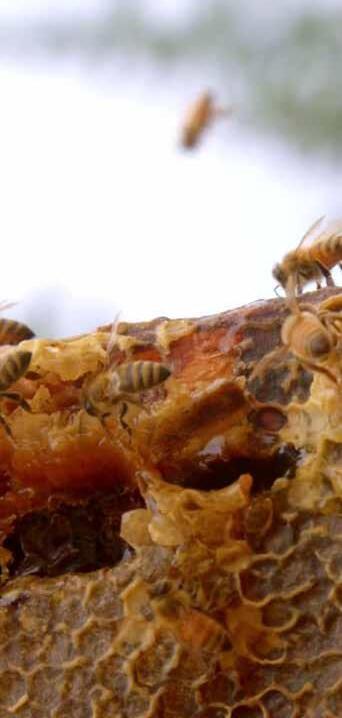
TV & ONLINE
Watch the show online or on your local station
KSPS (Spokane)
Mondays at 7:00 pm and Saturdays at 4:30 pm ksps.org/schedule/
KWSU (Pullman)
Fridays at 6:00 pm nwpb.org/tv-schedules/
KTNW (Richland)
Saturdays at 1:00 pm nwpb.org/tv-schedules


KBTC (Seattle/Tacoma)
Saturdays at 6:30 am and 3:00 pm kbtc.org/tv-schedule/
KIMA (Yakima)/KEPR (Pasco)/KLEW (Lewiston)
Saturdays at 5:00 pm kimatv.com/station/schedule / keprtv.com/station/schedule klewtv.com/station/schedule
KIRO (Seattle) Check local listings kiro7.com
NCW Life Channel (Wenatchee) Check local listings ncwlife.com
RFD-TV

Thursdays at 12:30 pm and Fridays at 9:00 pm (Pacific) rfdtv.com/
*Times/schedules subject to change based upon network schedule. Check station programming to confirm air times.
Summer Berry Salad with
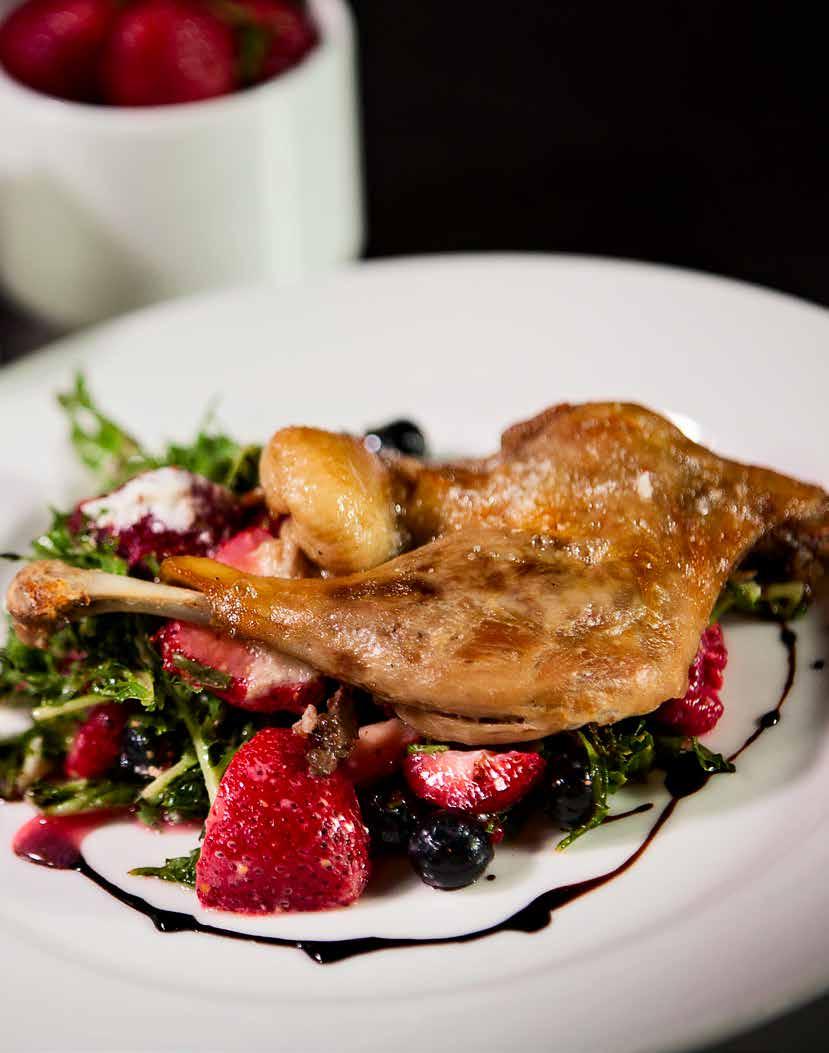
Grocery List with Duck Confit

60 minutes
You will achieve the purest summertime vibe with this refreshing and flavorful summer dish!
Ingredients:
4 duck confit legs
4 heads of frisee
Mixed berries: blueberries, raspberries, strawberries
2 oz. mascarpone cheese
¼ c. whole grain mustard
½ c. sherry vinegar
1 oz honey
1 ¼ c. extra virgin olive oil
Salt and pepper (as needed)
Balsamic reduction or aged balsamic vinegar
Directions:

1.Heat oven to 450 degrees.
2.To make vinaigrette, mix sherry vinegar, mustard and honey together. When mixed, slowly add oil while mixing to emulsify vinaigrette.
3.Wash and clean frisee and fruit and set aside.
4.Place the 4 duck confit legs in a 9x11 baking pan and place into the oven. Bake until skin is crispy, and duck is cooked.
5.Toss frisee, berries and mascarpone cheese together with vinaigrette. Place salad on four plates, set a duck leg on top of each salad and drizzle with balsamic. Enjoy!
4 duck confit legs
4 heads frisee
Mixed berries
Mascarpone cheese
Whole grain mustard
Sherry vinegar
Pantry ingredients: honey, olive oil, aged balsamic vinegar, salt, pepper.
For the ultimate summer splash, pair this recipe with a Dry Fly Huckleberry Lemonade. This drink features their award winning Washington vodka, real huckleberry syrup from Homemade by Dorothy’s, house-made lemonade, and natural flavors to give you a unique and refreshing taste of the Northwest.

ENTER TO WIN!
Visit our website and sign up to be entered into a drawing for a $25 gift certificate to the Mercato Ristorante in Olympia!
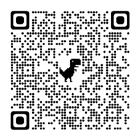
*Limit one entry per household


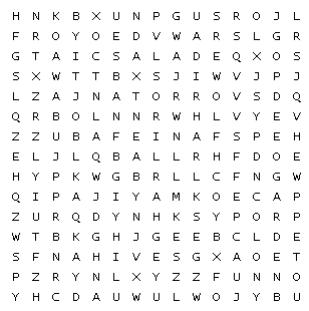
DID YOU KNOW
Foragers must collect nectar from roughly 2 million flowers to make one pound of honey.
BEE BUZZ COLONY FARMS
FLOWERS
GARDEN HIVE
HONEY
NECTAR PLANTS
POLLINATION
SALAD
STRAWBERRIES WINGS
Mercato Ristorante is more than a local favorite
It’s not just locals who love the food and the vibe of this place! Opening in 2002, Mercato Ristorante has been a favorite of locals and visitors to downtown Olympia. Located directly across the street from the Olympia Farmers Market, Mercato is able to offer fresh, Italian-inspired dishes using ingredients picked by local farmers. We spoke with chef Taylor Vroman about how the farmers market has played a role in the success of the restaurant.
“Well, Mercato means market, and we are right across the street from the markets,” he said. “You get to know people, and you see things that you didn’t really know was grown in the Northwest, and it’s fun.”

Every menu item is prepared fresh and from scratch, and it shows. Mercato also features a beautifully crafted bar, where delightful cocktails are mixed, local beers are poured, and
a good list of Northwest wines are served. Both urban and comfortable, Mercato is an upscale casual restaurant whose focus is simple, fresh Italian fare. Local ingredients are the key to unlocking outstanding flavor in their dishes.
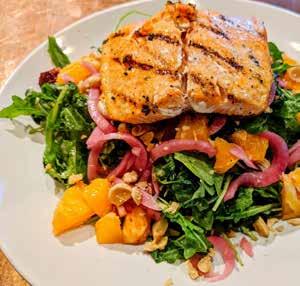

“I think it’s very important. It’s important because they’re fresher,” Vroman said. “They have less travel time. It’s fun for the people who come to your restaurant because they might know the farmers who produced the local ingredients. I think it’s good for the flavors, and it’s also just good for the community to use things that are close.”
What are people going to find when they come to Mercato? “I would say we’re an Italian-based restaurant, but Northwest Italian. We’re serving salmon, lots of garlic, tomatoes, vinegars. We make all our own pasta inhouse.”
Freezerves are made from fresh Washington-grown berries. They come straight off the farm and into their unique preserves.
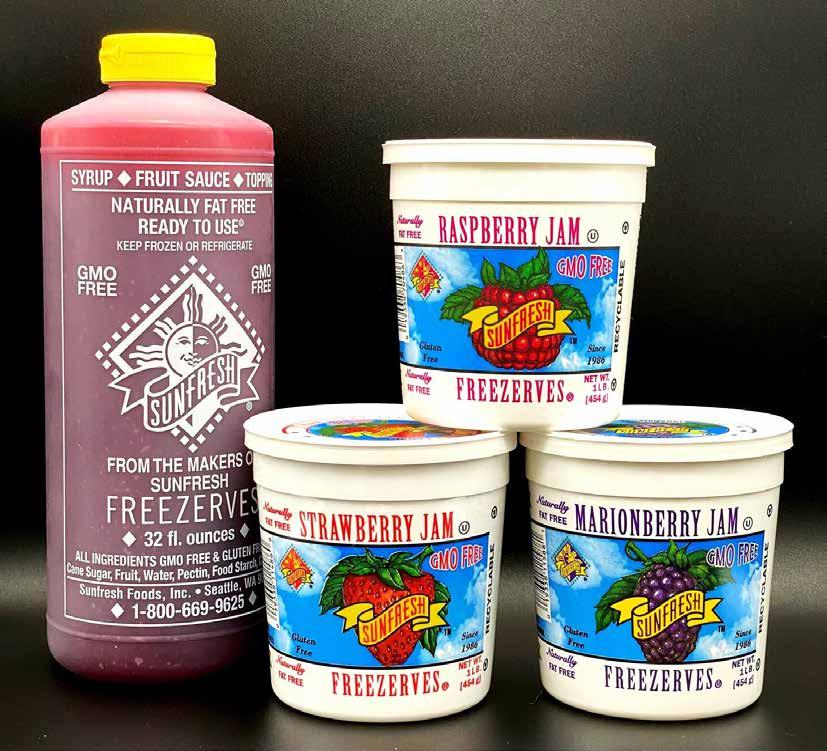
Their name is literally a play on words, well, at least a little bit. Freezerves is a registered trademark name that refers to their product being a “freezerve” rather than the cooked jams that are a preserve.
“We registered-trademarked the name “Freezerves” to try and have a little fun with it and to identify our product,” explained owner Reed Hadley. Sunfresh Jams makes an assortment of locally made jams and preserves. “With the exception of our apricot and apricot-orange marmalade, the three big flavors that we produce out of here are the strawberry, raspberry and marionberry.”
Washington’s frozen treasure
With all the great fruit and berries in our region, it’s extremely important for Sunfresh to choose local.
“It’s very important to us, because, back when we started in 1986, I can still remember that first batch we made from these beautiful California strawberries,” said Hadley. “They were gorgeous, but they had little flavor. They could not compete with our local strawberries. It was obvious, at that time, that we would never go outside the Northwest for our fruit again. The taste we get from our local growers, like Sakuma Brothers, it’s beyond compare. There’s nobody that grows better fruit than the Northwest.”
Local growers’ ability to freeze their fruit right in the field greatly impacts its taste and freshness.

“Sakuma has already picked and cleaned and made our process even better and easier because we just have to open up the top of the pails after we thaw them and pour them into the mixer, and get them ready to process,” said Hadley. It’s as fresh as it ever gets. That’s what really drew us to the product in the first place, because of it’s enormous ability to capture that field-fresh taste of sitting there like when you were a kid and you were forced to pick strawberries, for example.”
Sunfresh knows flavor and quality. With only five ingredients (pure cane sugar, fruit, fruit pectin, food starch and citric acid from lemons), Sunfresh makes sure that your freezer jam tastes like fresh fruit! They started the company in 1986 on the 4th of July.
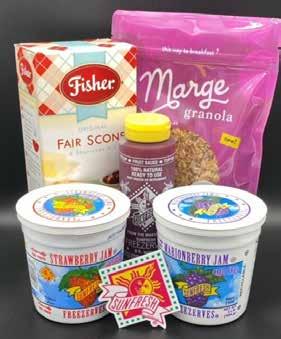
“That’s our anniversary, as it turns out,” said Hadley. ”We’re very proud of that. I don’t know why we didn’t have something to do on the 4th of July all those years ago. I have no idea, but that’s what we were doing, we were making freezer jam.”
You can find Sunfresh Freezerves in the Seattle area at QFC, Brown & Cole Stores, selected Albertsons in Oregon and Washington, and Rosauers east of the mountains.

They need us now!
Local food banks don’t just need support during the holidays. Summer and fall months are also important for feeding families in the Northwest.
Hunger doesn’t end after Thanksgiving and Christmas. One in six Washington kids live in a household that faces challenges in putting enough food on the table. For these kids, the summer months are filled with uncertainty about where their next meal will come from.
It’s also estimated that nearly 80 billion pounds of food is wasted annually in the United States, more than any other country in the world. Food banks need your help in the summer and fall months, especially as inflation persists and children don’t have access to school meals during the summer. Families are stressed to fill the gaps.
Food banks like Second Harvest in Spokane and the Tri-Cities area are tackling this through a simple mission of fighting hunger, feeding hope. Second Harvest brings community resources together to feed people in need

through empowerment, education and partnerships. They are encouraging neighbors and communities to continue giving during the summer and fall months.
While inflation has hit every wallet in the state, Washington still ranks 10th in the country in overall wealth. Yet, it also ranks 34th in food insecurity. “It’s the first harvest that makes the second harvest possible,” said Second Harvest Community Partnerships director, Eric Williams.

Whether a donation of money, canned food or your time through volunteering, your local food banks need your help right now. To learn more about your local food bank and how to get involved, visit these resources:
2-harvest.org
northwestharvest.org
feedingamerica.org
